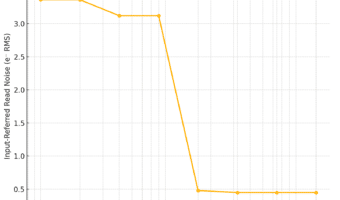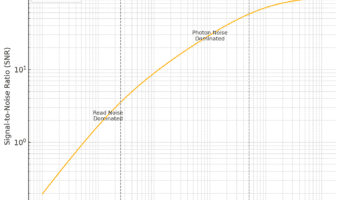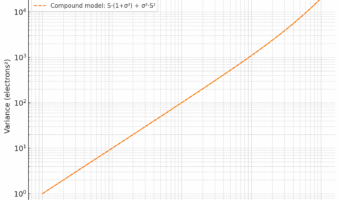Read noise sets the lower limit of a sensor’s usable dynamic range. It encompasses all noise sources between the pinned photodiode (PPD) and the final digital output. For modern CMOS sensors, this path is often split into two readout modes via dual conversion gain (DCG). Read noise includes: Reset noise at the floating diffusion (kTC… [Read More]
Photon Transfer Curves: a unifying tool for analyzing sensor noise
The Photon Transfer Curve (PTC), popularized by James Janesick in Photon Transfer, is a powerful tool for characterizing image sensors. It relates mean signal level to signal variance, capturing the behavior of multiple noise sources across the full dynamic range. The Basic Idea Plot the variance of the pixel output against the mean signal level… [Read More]
Choosing a Target for Photon Transfer Curve (PTC) Analysis
The Photon Transfer Curve (PTC) is a foundational tool in sensor characterization, offering insight into read noise, shot noise, and PRNU by plotting variance versus signal level. But to get clean, meaningful data — especially across the full dynamic range — the choice of target matters. A well-designed target can dramatically improve sampling density and… [Read More]
Input-Referred Noise in Image Sensors
When evaluating sensor performance, it’s useful to express all noise sources in terms of their equivalent number of input electrons: the physical signal that initiated the chain of image formation. This concept, known as input-referred noise, allows us to compare different sensors, modes, and ISOs on a consistent basis. Image sensors measure light by converting… [Read More]
Pixel Response Non-Uniformity: Fixed Pattern Noise in the Light
In the previous post, I looked at photon shot noise, a fundamental noise source arising from the quantum nature of light. Today I’ll examine a different kind of noise: one that’s not random from frame to frame, but rather baked into the sensor itself: Pixel Response Non-Uniformity, or PRNU. PRNU refers to pixel-to-pixel variation in… [Read More]



